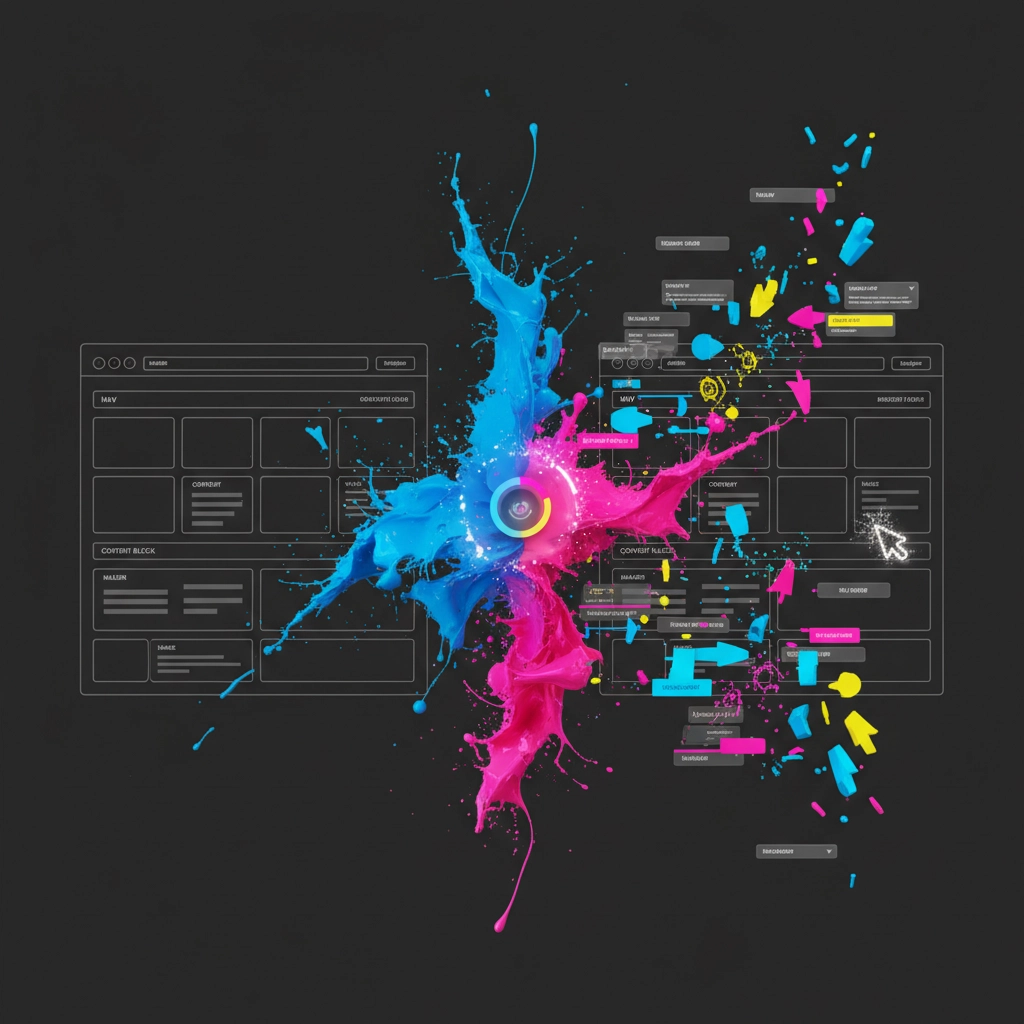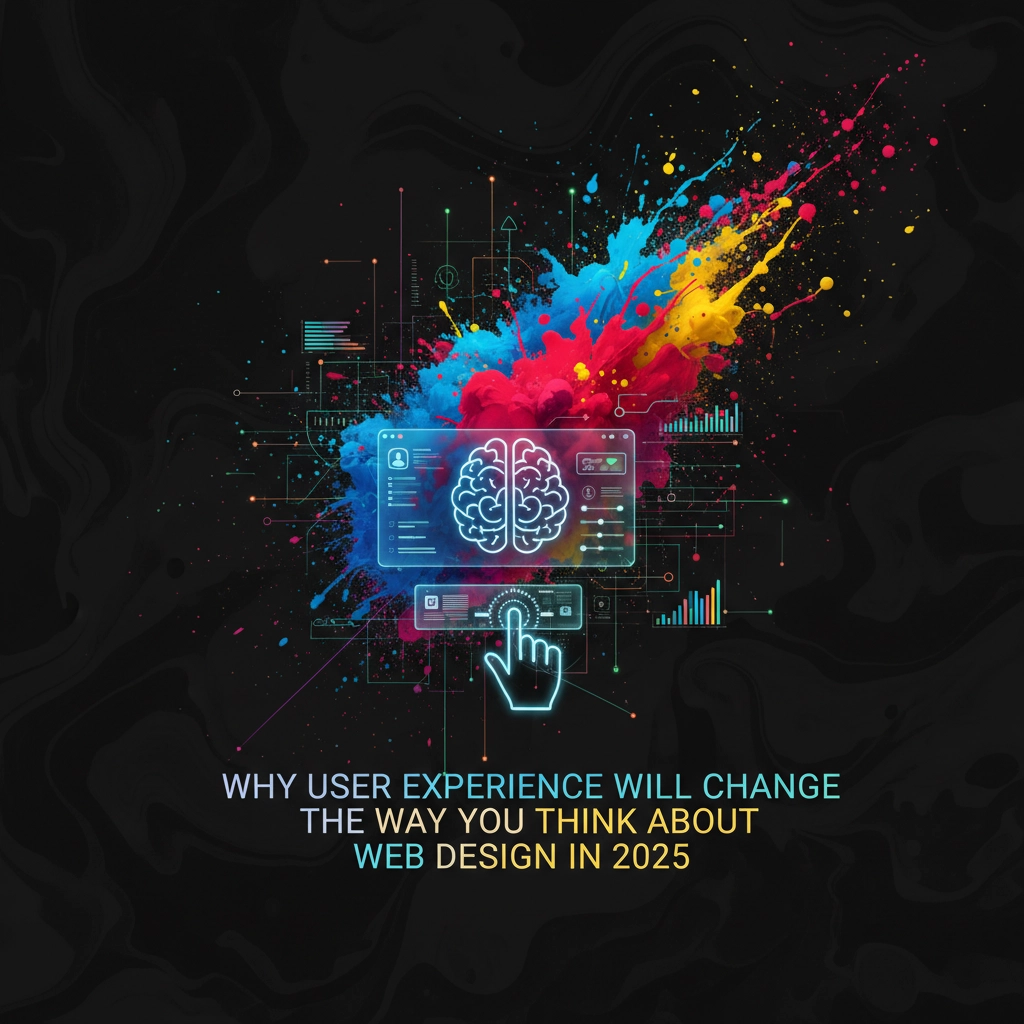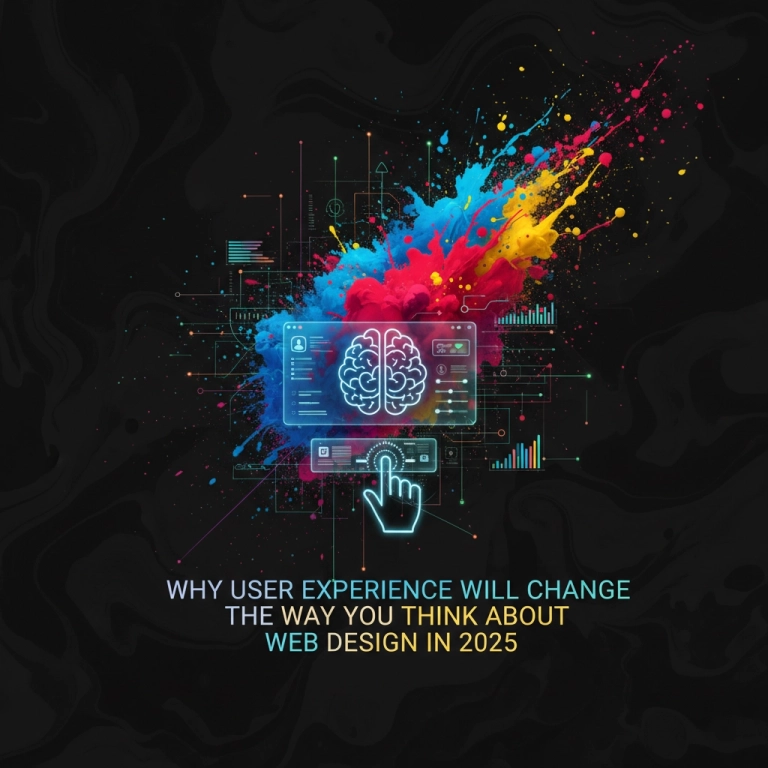Web design is experiencing a seismic shift. Gone are the days when a beautiful website was enough to impress your visitors. In 2025, user experience (UX) isn't just part of the design process: it's completely revolutionising how we approach every aspect of web creation.
If you've been thinking about web design purely in terms of colours, fonts, and layouts, it's time for a fundamental mindset change. The websites that win in 2025 are those that prioritise seamless user experiences over stunning visuals, though the best achieve both.
The Great Transition: From Pretty to Practical
The traditional approach to web design focused heavily on visual impact. Designers would create stunning mockups, developers would build them, and everyone hoped users would figure out how to navigate them. This approach is rapidly becoming obsolete.
Today's successful web design starts with a simple question: "How can we make this effortless for our users?" This shift means every design decision: from button placement to colour choices: is evaluated through the lens of user experience rather than purely aesthetic appeal.
Think about it: a visitor to your website has a specific goal. They might want to learn about your services, make a purchase, or contact your team. If your website makes achieving that goal difficult, no amount of beautiful imagery will save the experience.

Interactive Experiences Are Becoming Essential
One of the most exciting developments in 2025 is the rise of interactive storytelling through sophisticated animations and micro-interactions. These aren't flashy effects for the sake of it: they're carefully crafted experiences that guide users through your content.
Micro-animations are now essential elements that provide instant feedback when users interact with your site. Think about the subtle bounce when you hover over a button, or the smooth transition when a menu opens. These tiny details create significant impact by making interfaces feel responsive and alive.
Scroll-triggered animations are transforming static web pages into dynamic narratives. As users scroll, elements zoom, slide, or fade in, turning the browsing experience into an interactive story. This approach makes visitors active participants rather than passive consumers of your content.
The key is purposeful implementation. Every animation and interaction should serve a clear purpose: whether that's guiding attention, providing feedback, or simply delighting users as they explore your site.
Accessibility: No Longer Optional, Now Essential
Perhaps the most significant shift in UX thinking for 2025 is the elevation of accessibility from an afterthought to a core design principle. Creating inclusive web experiences isn't just about compliance: it's about reaching and serving the widest possible audience.
This means designing with everyone in mind from the very beginning. Colour contrast ratios, keyboard navigation, screen reader compatibility, and clear visual hierarchies aren't technical requirements to add later: they're fundamental design considerations that shape every decision.
The beauty of accessible design is that it benefits everyone, not just users with disabilities. Clear navigation helps all visitors find what they're looking for. Good colour contrast improves readability for everyone. Logical content structure makes your site easier to understand regardless of how it's accessed.
Smart businesses are realising that inclusive design isn't a limitation: it's an opportunity to serve more customers more effectively.

Performance Now Drives Design Decisions
In 2025, UX considerations are influencing technical decisions in unprecedented ways. The choice between photography and custom illustrations isn't purely aesthetic anymore: it's often driven by performance requirements, as illustrated images typically load faster due to smaller file sizes.
Page speed has become a critical UX factor, with users expecting near-instant loading times. This means designers are making strategic choices about image optimisation, code efficiency, and content delivery methods based on their impact on user experience.
The result is leaner, faster websites that don't sacrifice visual appeal for performance. Instead, they achieve both through thoughtful planning and strategic implementation.
The Human Touch in Digital Experiences
Interestingly, 2025 is seeing a movement towards more authentic, human-centred design. The perfectly polished look that dominated web design for years is giving way to intentionally imperfect designs that feel more genuine and relatable.
This includes asymmetrical layouts, experimental typography, and design choices that challenge conventional rules while prioritising authentic user engagement. The goal isn't to be different for the sake of it, but to create more meaningful connections between brands and their audiences.
This shift recognises that users crave authenticity in their digital experiences. They want to feel like they're interacting with real people and genuine brands, not perfect but cold corporate facades.

Technology Serving Experience, Not Dictating It
Advanced capabilities like voice-activated interfaces, interactive 3D models, and even virtual reality integration are becoming more common in 2025. However, the key difference is that these technologies are being implemented thoughtfully to enhance user experience rather than simply to showcase technical capabilities.
For ecommerce sites, micro-interactions and sophisticated product visualisations help customers make informed purchasing decisions. For service businesses, interactive elements can guide prospects through complex information in digestible, engaging ways.
The critical distinction is purposeful implementation. Technology should solve user problems and enhance experiences, not create barriers or confusion.
The Business Impact of Experience-Driven Design
This shift towards UX-centred thinking represents more than a design trend: it's a strategic business imperative. Companies investing in user experience are seeing measurable returns through improved conversion rates, reduced bounce rates, and increased customer satisfaction.
When user experience drives design decisions, websites become more effective business tools. They don't just look impressive: they convert visitors into customers and build lasting relationships.
Consider the long-term benefits: reduced support requests because your site is intuitive to use, increased sales because the purchasing process is seamless, and improved brand perception because every interaction feels thoughtful and well-designed.

Future-Proofing Through User-Centric Design
The emphasis on sustainable web design and thoughtful colour palettes that reduce visual fatigue shows how UX thinking is considering the long-term relationship between users and digital products. This holistic approach ensures that design decisions support both immediate user needs and sustained engagement over time.
Rather than chasing the latest visual trends, successful websites in 2025 are built on timeless UX principles: clarity, simplicity, and genuine usefulness. These foundations remain relevant regardless of how technology evolves.
Making the Shift in Your Own Projects
If you're ready to embrace this UX-driven approach to web design, start by auditing your current site through your users' eyes. Can visitors easily find what they're looking for? Is the navigation intuitive? Does every page serve a clear purpose in the user journey?
Consider working with experienced professionals who understand both the technical aspects of modern web development and the strategic thinking behind exceptional user experiences. The investment in proper UX-focused design pays dividends through improved business results and customer satisfaction.
The future of web design isn't about choosing between beautiful visuals and great user experience: it's about achieving both through thoughtful, user-centred design processes. In 2025, the websites that succeed are those that make every visitor feel understood, supported, and valued throughout their digital journey.
Your website should work as hard as you do for your business. By embracing UX-driven design thinking, you're not just keeping up with trends; you're positioning your business for sustained digital success.



